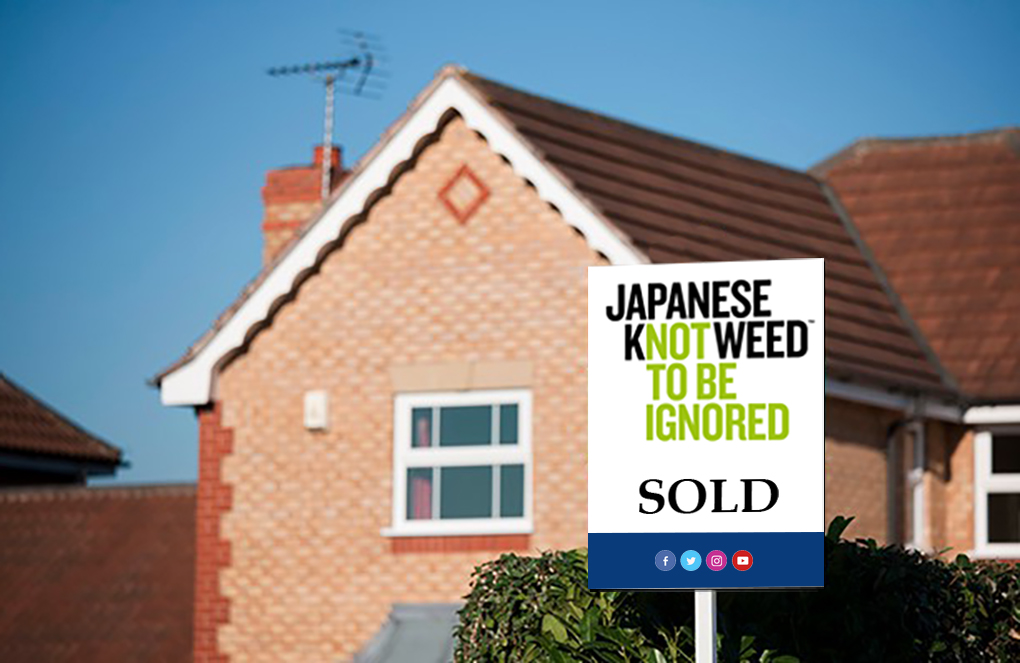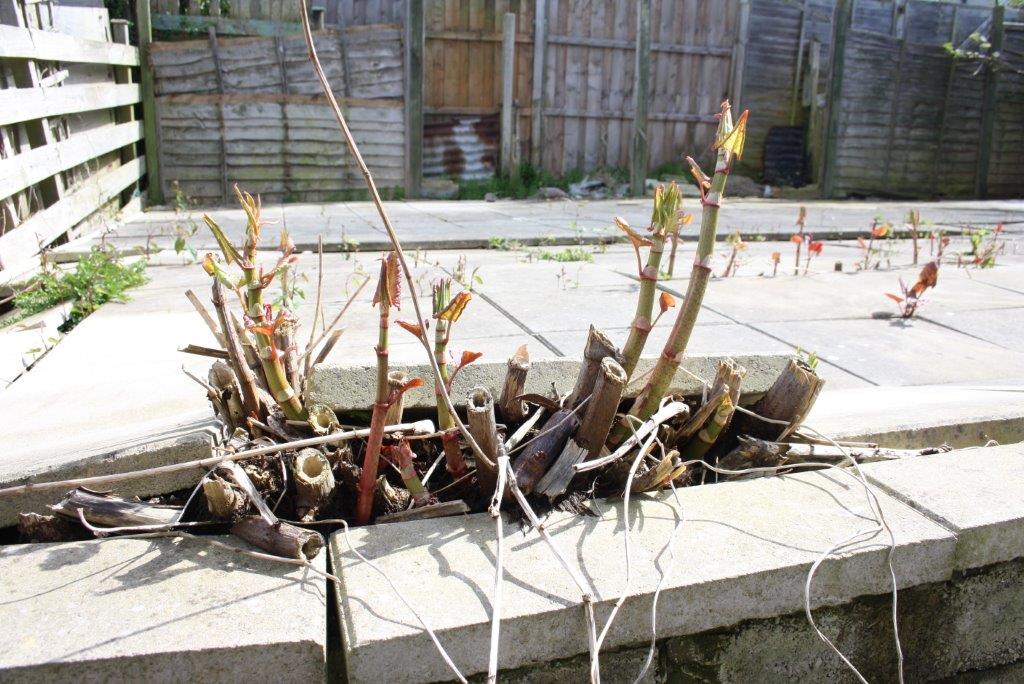
The Ultimate Guide to Japanese Knotweed and Mortgages
Looking to buy or sell a property with Japanese knotweed? It doesn’t need to be stressful! This guide will tell you everything that you need to know.
1. Understanding Japanese Knotweed’s Impact on Mortgages
Mortgage lenders may hesitate to approve loans for properties affected by Japanese knotweed due to concerns over potential structural damage and the costs of eradication. Some key risks include:
- Damage to foundations, walls, and drainage systems caused by the plant’s rapid and aggressive growth.
- Decreased property value, making the home less appealing as collateral for lenders.
Lenders often require clear evidence that the knotweed issue is being professionally managed before agreeing to finance the property. A Knotweed Management Plan will be sufficient for most lenders.

2. What Mortgage Lenders Look For
Lenders assess the severity of the knotweed problem using criteria such as proximity to the property, extent of infestation, and eradication plans. Many rely on the Royal Institution of Chartered Surveyors (RICS) framework, which categorizes knotweed infestations into four risk levels using a distance of 7m from buildings and boundaries as the defining measurement.
Typical Lender Requirements:
- Professional knotweed survey
A detailed survey by a qualified expert, confirming the plant’s presence, location(s) and severity. - Management or treatment plan
A comprehensive plan (typically 5 to 10 years) developed by a Property Care Association (PCA) accredited specialist, detailing steps for eradication and future monitoring. - Insurance-backed guarantee (IBG)
A guarantee policy that provides insurance cover for the treatment plan in the event the contractor ceases to trade.


4. Advice for Buyers of Knotweed-Affected Properties
Buying a property with Japanese knotweed? Follow these steps:
- Request documentation: Ensure the seller provides a professional knotweed survey, treatment plan, and IBG.
- Negotiate with the lender: Some lenders may be cautious, but presenting a robust management plan often satisfies their requirements.
- Seek expert advice: Consult mortgage advisors familiar with Japanese knotweed issues. They can help you find lenders willing to approve loans under the right conditions.

5. Legal Obligations: What You Need to Know
Homeowners have a legal responsibility to manage Japanese knotweed and prevent its spread to neighbouring properties. Failing to do so can lead to:
- Legal action: Under the Anti-Social Behaviour, Crime, and Policing Act 2014, allowing knotweed to spread can result in fines or prosecution.
- Loss of tust: Transparency is critical in property transactions. Disclosing knotweed issues upfront helps maintain goodwill and avoids disputes.

6. Lender Policies at a Glance
Here’s how some lenders handle Japanese knotweed:
| Lender | Policy | Requirements |
|---|---|---|
| HSBC | Considers lending if the knotweed is not causing structural damage and is more than 7 meters from the property. | Requires a professional treatment plan with an insurance-backed guarantee. |
| Nationwide Building Society | May lend if a professional treatment plan is in place, even if the knotweed is within 7 meters, provided there is no structural damage. | Requires a PCA-accredited treatment plan and an insurance-backed guarantee. |
| Lloyds Bank/Halifax | Assesses on a case-by-case basis; may lend if knotweed is under control and not causing damage. | Requires evidence of a management plan and an insurance-backed guarantee. |
| Royal Bank of Scotland (RBS) | May consider lending if a treatment plan is in place and the knotweed is not causing structural issues. | Requires a professional treatment plan and an insurance-backed guarantee. |
| Santander | Generally cautious; may decline if knotweed is within 7 meters, even with a treatment plan. | Requires a PCA-accredited management plan and supporting documentation. |
| Barclays | Requires a risk assessment; may lend if knotweed is more than 7 meters away or if a treatment plan is effectively managing the issue. | Requires a treatment plan and an insurance-backed guarantee. |
| NatWest | May lend if the infestation is beyond 7 meters and under control. | Requires an insurance-backed guarantee and a professional management plan. |
| TSB | Considers lending if a treatment plan is in place and the knotweed is not causing structural damage. | Requires a PCA-accredited treatment plan and an insurance-backed guarantee. |
| Yorkshire Building Society | May lend if a professional treatment plan is in place and the knotweed is not causing structural damage. | Requires a treatment plan and an insurance-backed guarantee. |
| Coventry Building Society | Assesses on a case-by-case basis; may lend if knotweed is under control and not causing damage. | Requires evidence of a management plan and an insurance-backed guarantee. |
Note: Policies are subject to change. It’s advisable to consult directly with lenders or a mortgage advisor for the most current information.
7. Common Myths About Japanese Knotweed
Myth 1: Knotweed always devalues a property.
Fact: While it can reduce value, effective management often restores property appeal.
Myth 2: You can’t get a mortgage for affected properties.
Fact: Many lenders will approve mortgages if a treatment plan and guarantee are in place.
Myth 3: Cutting knotweed back is enough to control it.
Fact: Professional treatment is the only way to eradicate knotweed effectively.

Conclusion
Japanese knotweed doesn’t have to be a deal breaker for property transactions. By taking proactive steps, working with accredited professionals, and addressing lender requirements, you can navigate the complexities of knotweed-related mortgages with ease.
If you need expert guidance, Japanese Knotweed Ltd offers tailored solutions, from surveys and management plans to guarantees that meet lender expectations. Contact us today to safeguard your property and secure your mortgage.

